Nine Australian grain growers earned top honours in the 2020 Hyper Yielding Crops (HYC) awards, a project encouraging the growth of hyper-yielding and more profitable crops of wheat, barley and canola by closing the gap on potentially achievable yields.
The awards are part of GRDC’s HYC initiative, led by Field Applied Research (FAR) Australia, which spans the high-rainfall areas of Victoria, South Australia, Tasmania, New South Wales and Western Australia.
Although the HYC initiative focuses on increasing the yields of wheat, canola and barley, the awards shine a light on the tools critical for boosting wheat yields through comparative agronomic benchmarking.
GRDC grower relations manager Randall Wilksch says the program was set up to facilitate whole-of-community learning in a bid to lift the economically attainable yields of wheat.
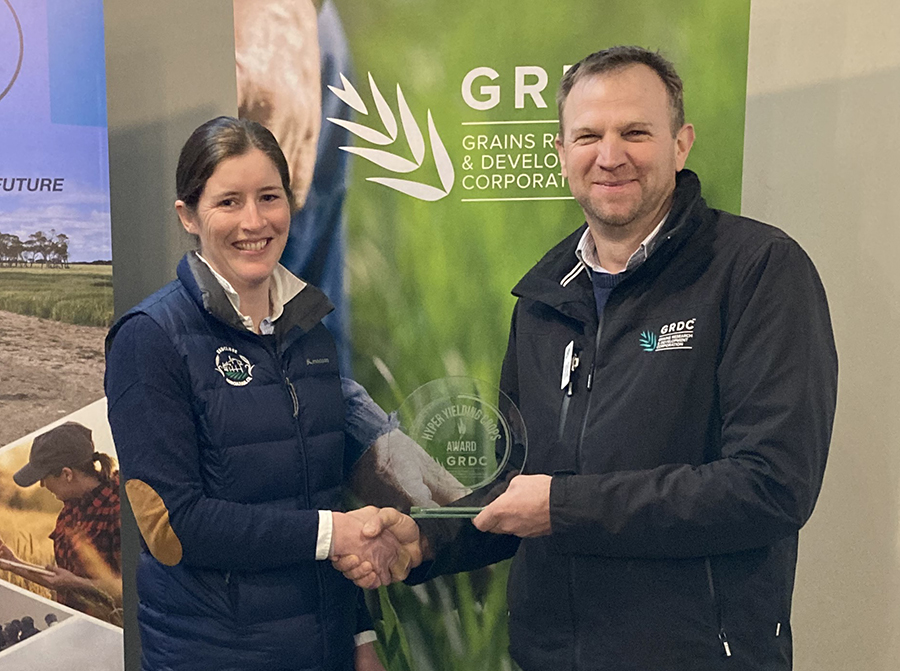
GRDC grower relations manager Randall Wilksch (right) congratulates Penny Hooper from the Vaucluse Agricultural Company, Conara, Tasmania, who accepted the GRDC Hyper Yielding Crop award for ‘Highest Wheat Yield’ (Tasmania) on behalf of her organisation. Photo: Kenton Porker
“We established the national HYC awards to encourage those with an interest in increasing their productivity to submit a paddock of wheat for agronomic benchmarking,” Mr Wilksch says.
“I congratulate and thank the 65 individuals who volunteered a season’s worth of data for one paddock of wheat for benchmarking in 2020, and I hope the knowledge gained will assist in fine-tuning management going forward.”
Yield associations
HYC national extension coordinator Jon Midwood, of TechCrop Services, announced the HYC award winners during July and August.
Mr Midwood says high yields among the 2020 winners were associated with:
- sowing the appropriate season-length variety so flowering occurs at the optimum time for each environment;
- keeping the crop canopy green and free of disease with well-timed fungicides; and
- growing wheat after a break crop, typically a pulse or canola crop.
“There are no silver bullets in the data and we did not assess gross margins, as we are looking only at agronomy benchmarks,” he says.
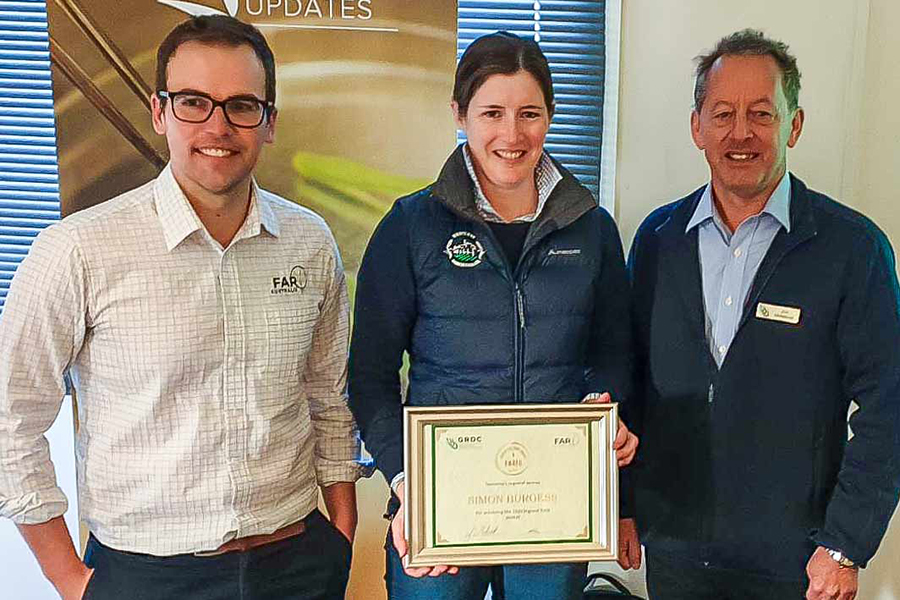
FAR Australia research director Dr Kenton Porker (left) with GRDC southern panel member and Hyper Yielding Crops national extension coordinator Jon Midwood (right) presented the GRDC Hyper Yielding award for ‘Highest Wheat Yield’ (Tasmania) to Penny Hooper from the Vaucluse Agricultural Company. Team members from the company earned the HYC award for ‘Highest Wheat Yield’ (Tasmania). Photo: FAR Australia.
“Each participant received a report showing what was done on their wheat paddock in 2020, how the top 20 per cent of growers in their region performed and how this compares to the rest of the growers from their region.
“The data indicates there are several one per cent changes that participants can make to help close the gap between actual and potential yield.”
Tasmanian crops shine
The team at Vaucluse Agricultural Company near Conara in Tasmania grew the highest-yielding wheat crop of the 2020 cohort with an 18-hectare irrigated paddock of DS Bennett, which produced 11 tonnes/ha of grain.
However, when the crop’s actual yield was considered as a percentage of the estimated yield potential, it was placed third in Tasmania and 12th nationally (see Table 1).
Table 1: Winners of the 2020 GRDC Hyper Yielding Crops awards.
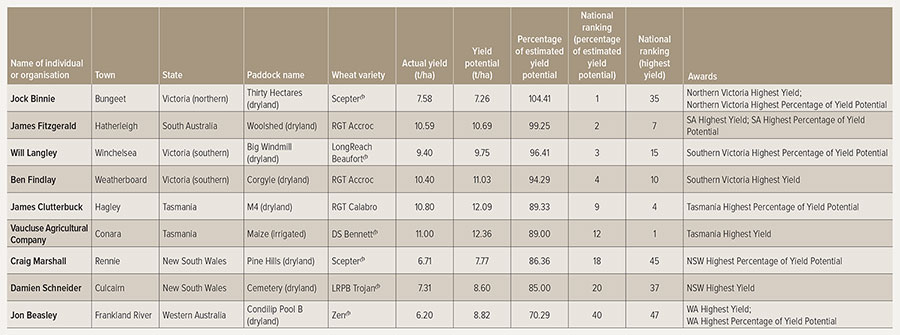
Source: TechCrop Services and Far Australia, 2021.
From a gross margin point of view, Mr Midwood says James Clutterbuck, who earned the Tasmanian award for the ‘Highest Percentage of Yield Potential’, may have produced more profit per hectare because he entered a crop of RGT Calabro wheat that yielded 10.8t/ha without irrigation.
“However, this is an agronomy benchmarking program, so readers need to keep in mind the calculated rankings could be different if returns per hectare were part of the equation,” he says.
Victorian crop excels
When actual crop yields were calculated as a percentage of yield potential for each paddock, northern Victorian grain grower Jock Binnie of Bungeet grew the top-ranking crop.
Mr Binnie’s 30ha dryland paddock of Scepter wheat yielded 7.58t/ha. Weighbridge tickets validated that the crop’s actual yield exceeded its estimated potential of 7.26t/ha by four per cent.
Mr Midwood says the beauty of benchmarking each crop according to percentage of yield potential is that it enables agronomy to be compared against the theoretical optimum for each paddock.
“Essentially, then, participants compete only with themselves and can focus on tweaking agronomy and management specific to their crop and paddock to close future yield gaps,” he says.
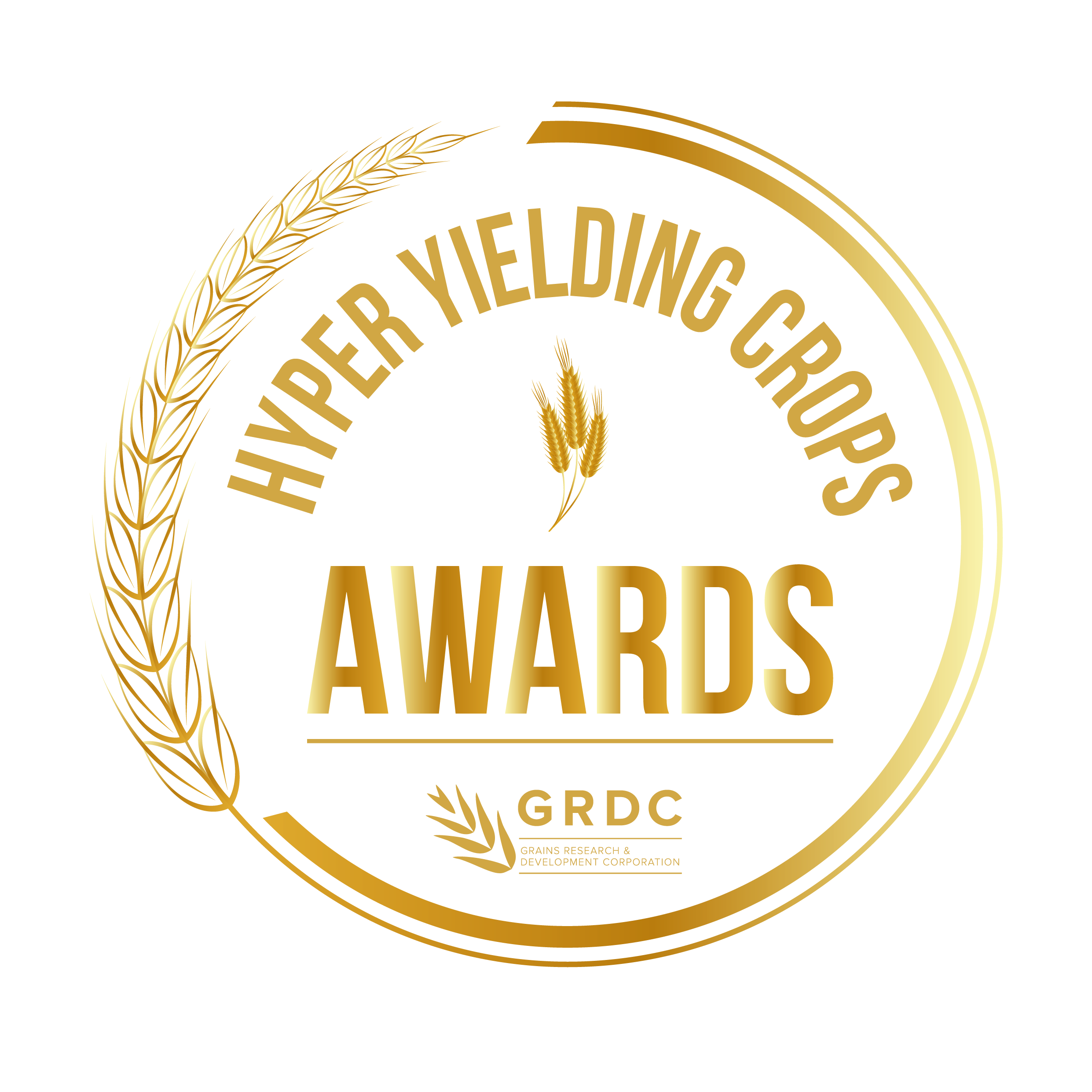
The nine 2020 award winners are:
- Jock Binnie, Bungeet, Victoria;
- James Fitzgerald, Hatherleigh, SA;
- Will Langley, Winchelsea, Victoria;
- Ben Findlay, Weatherboard, Victoria;
- James Clutterbuck, Hagley, Tasmania;
- Vaucluse Agricultural Company, Conara, Tasmania;
- Craig Marshall, Rennie, NSW;
- Damien Schneider, Culcairn, NSW; and
- Jon Beasley, Frankland River, WA.
Yield potential
To calculate estimated yield potential, Mr Midwood says the HYC team developed a model for each paddock based on the influences of rainfall, soil water-holding capacity, temperature and radiation.
“We calculated yield potential using these variables and crop growth features derived from best practice experimental research,” he says.
“The calculations assume management is optimised and the ‘best’ known variety is grown with no agronomic constraints such as disease, nutrient deficiency, lodging, frost or waterlogging that limit yield apart from rainfall, soil water-holding capacity, radiation and temperature.”
Valuable analysis
State HYC coordinators gathered soil, plant tissue and grain samples from every paddock for detailed analysis through the Australian Precision Ag Laboratory (APAL) to determine possible nutrient deficiencies.
An analysis of growers’ individual results is included in each report, as well as the comparative data of all the other award growers from that region. This allows participants to understand what factors could be addressed to help future crops reach their yield potential and how they compare to the other growers in their region, including the top 20 per cent.
GRDC’s HYC project has three components: five HYC research centres located nationally across high-rainfall areas, focus farms and grower innovation groups to scale-up the findings, and the HYC awards.
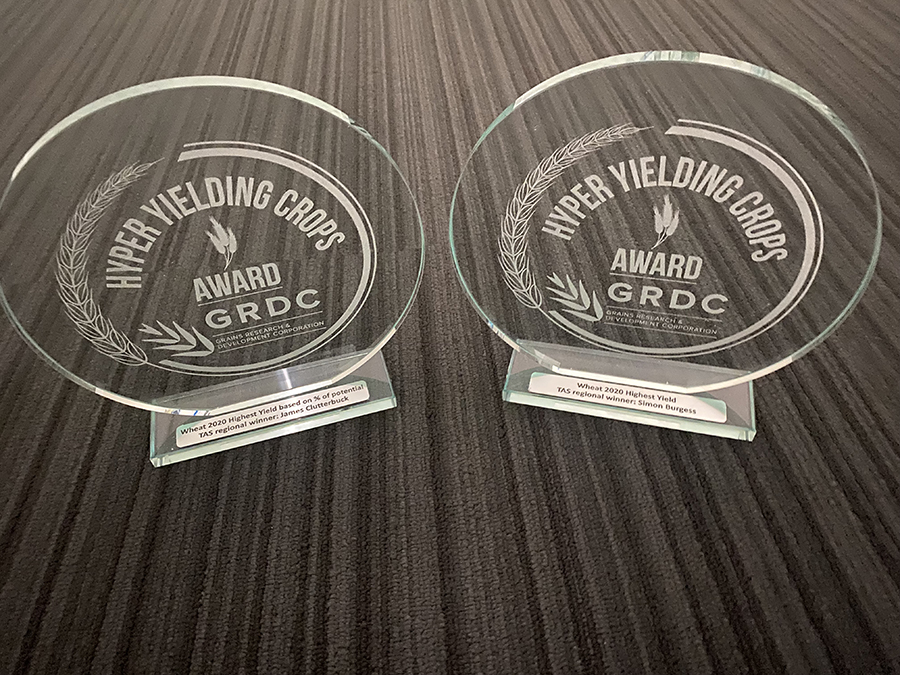
Two of the award trophies presented to the two Tasmanian 2020 Hyper Yielding Crops award winners. Photo: FAR Australia
The HYC award component of the project is coordinated by Mr Midwood working with the Centre for eResearch and Digital Innovation at Federation University Australia and four farming groups. These are Southern Farming Systems (SFS) in Tasmania and Victoria, MacKillop Farm Management Group (MFMG) in SA, Riverine Plains Inc in NSW and Stirlings to Coast Farmers in WA.
To participate in the 2021 HYC Award, contact your state coordinator:
- Victoria – Ashley Amourgis, SFS, aamourgis@sfs.org.au;
- Tasmania – Naomi Hender, SFS, nhender@sfs.org.au;
- SA – Jen Lillecrapp of MFMG, jen@brackenlea.com;
- NSW – Kate Coffey of Riverine Plains Inc, kate@riverineplains.org.au; or
- WA – Nathan Dovey of Stirlings to Coast Farmers, ceo@scfarmers.org.au.
More information: Jon Midwood, 0400 666 434, jon@techcrop.com.au; Nick Poole (project lead), 0499 888 066, nick.poole@faraustralia.com.au

























































